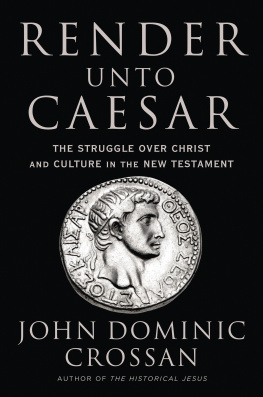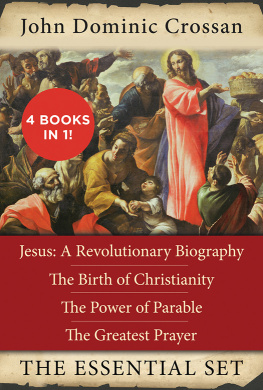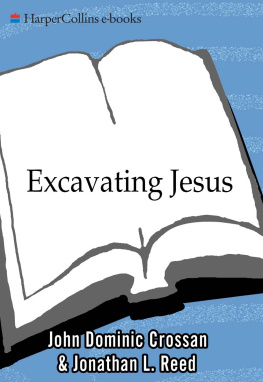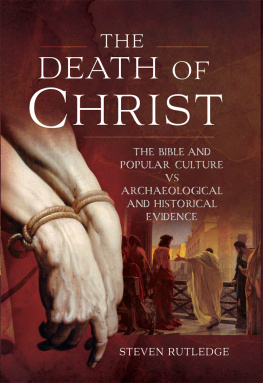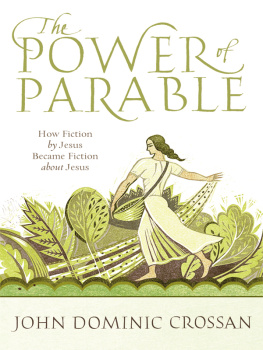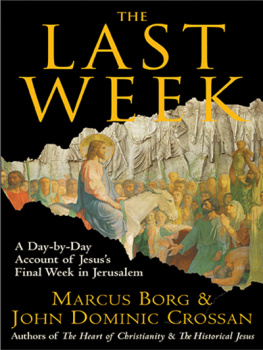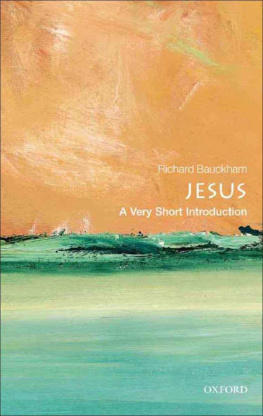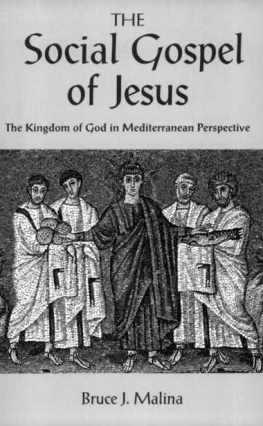John Dominic Crossan - The Historical Jesus: The Life of a Mediterranean Jewish Peasa
Here you can read online John Dominic Crossan - The Historical Jesus: The Life of a Mediterranean Jewish Peasa full text of the book (entire story) in english for free. Download pdf and epub, get meaning, cover and reviews about this ebook. year: 2010, publisher: HarperCollins, genre: Art. Description of the work, (preface) as well as reviews are available. Best literature library LitArk.com created for fans of good reading and offers a wide selection of genres:
Romance novel
Science fiction
Adventure
Detective
Science
History
Home and family
Prose
Art
Politics
Computer
Non-fiction
Religion
Business
Children
Humor
Choose a favorite category and find really read worthwhile books. Enjoy immersion in the world of imagination, feel the emotions of the characters or learn something new for yourself, make an fascinating discovery.

- Book:The Historical Jesus: The Life of a Mediterranean Jewish Peasa
- Author:
- Publisher:HarperCollins
- Genre:
- Year:2010
- Rating:4 / 5
- Favourites:Add to favourites
- Your mark:
The Historical Jesus: The Life of a Mediterranean Jewish Peasa: summary, description and annotation
We offer to read an annotation, description, summary or preface (depends on what the author of the book "The Historical Jesus: The Life of a Mediterranean Jewish Peasa" wrote himself). If you haven't found the necessary information about the book — write in the comments, we will try to find it.
He comes as yet unknown into a hamlet of Lower Galilee. He is watched by the cold, hard eyes of peasants living long enough at a subsistence level to know exactly where the line is drawn between poverty and destitution. He looks like a beggar yet his eyes lack the proper cringe, his voice the proper whine, his walk the proper shuffle. He speaks about the rule of God and they listen as much from curiosity as anything else. They know all about rule and power, about kingdom and empire, but they know it in terms of tax and debt, malnutrition and sickness, agrarian oppression and demonic possession. What, they really want to know, can this kingdom of God do for a lame child, a blind parent, a demented soul screaming its tortured isolation among the graves that mark the edges of the village?
from The Gospel of Jesus, overture to The Historical Jesus
The Historical Jesus reveals the true Jesuswho he was, what he did, what he said. It opens with The Gospel of Jesus, Crossans studied determination of Jesus actual words and actions stripped of any subsequent additions and placed in a capsule account of his life story. The Jesus who emerges is a savvy and courageous Jewish Mediterranean peasant, a radical social revolutionary, with a rhapsodic vision of economic, political, and religious egalitarianism and a social program for creating it.
The conventional wisdom of critical historical scholarship has long held that too little is known about the historical Jesus to say definitively much more than that he lived and had a tremendous impact on his followers. There were always historians who said it could not be done because of historical problems, writes Crossan. There were always theologians who said it should not be done because of theological objections. And there were always scholars who said the former when they meant the latter.
With this groundbreaking work, John Dominic Crossan emphatically sweeps these notions aside. He demonstrates that Jesus is actually one of the best documented figures in ancient history; the challenge is the complexity of the sources. The vivid portrayal of Jesus that emerges from Crossans unique methodology combines the complementary disciplines of social anthropology, GrecoRoman history, and the literary analysis of specific pronouncements, anecdotes, confessions and interpretations involving Jesus. All three levels cooperate equally and fully in an effective synthesis that provides the most definitive presentation of the historical Jesus yet attained.
John Dominic Crossan: author's other books
Who wrote The Historical Jesus: The Life of a Mediterranean Jewish Peasa? Find out the surname, the name of the author of the book and a list of all author's works by series.


